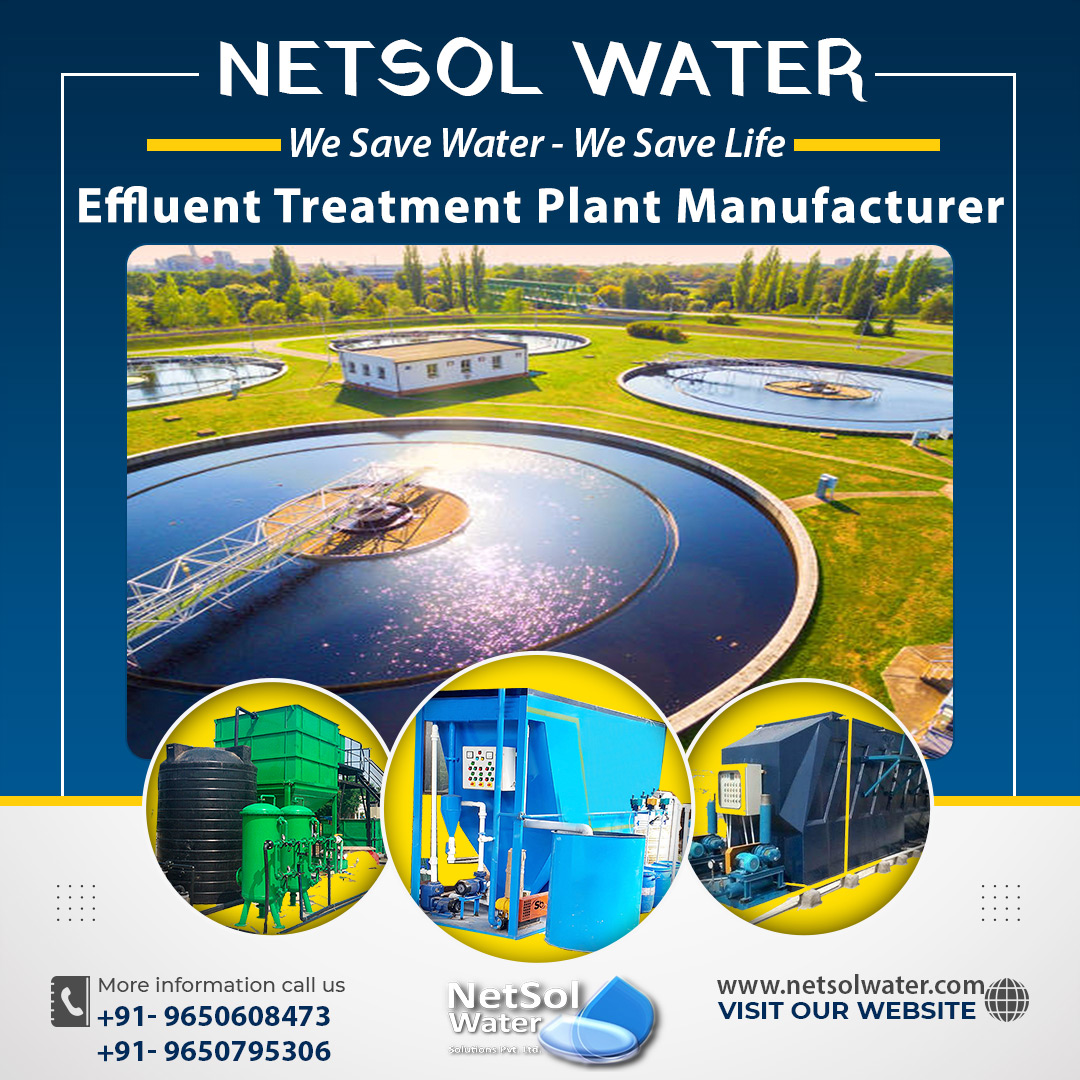What is an Effluent Treatment Plant? What are the requirements for treatment?
Industrial organizations participate in a procedure that finally results in effluent being discharged into the water. This effluent has the potential to pollute the environment and spread illness. Thus, Purification of wastewater becomes necessary.
The steps of effluent treatment are:
1: Preliminary Stage
2: Primary Treatment
3: Secondary Treatment
4: Tertiary Treatment
The treatment procedure is also influenced by the quality of the work, the type of the industry, and the volume of water present. So, when planning to establish an effluent treatment plant, you must specify all of your requirements in detail so that a cost-efficient, long-lasting, and effective effluent treatment plant may be provided.
In India, Netsol Water Solutions is a well-known firm that manufactures and supplies Effluent Treatment Plants.
How can you make a Cost Benefit Analysis of an ETP?
A cost-benefit analysis is a method of evaluating a project or undertaking's feasibility by measuring the expenses against the expected benefits. It may be used to judge whether or not a specific activity is worthwhile, as well as to assist in determining the optimal course of action.
Following are typical steps in a cost-benefit analysis:
1. Make a list of all the expenses and advantages associated with the planned activity.
2. Give each cost and gain a monetary value.
3. Add together all of the expenses and benefits to get the net present value.
4. Determine if the activity is worthwhile by comparing the net present value of the expenses and benefits.
Why is the Cost-benefit analysis carried out?
The cost analysis is carried out using the Asian Development Bank's standard methodologies. Prior to the implementation of analysis, the following points are clarified:
1: Project Life Cycle
2: Year of Evaluation
3: Discount Rate Average
4: The Financial Year
5: The Monetary unit
But, keep in the mind the following things before following the procedure to analyse cost-benefit ratio
1: Initial Fixed Investment: Different cost elements of initial fixed investment are to be made clear as discussed below:
-Land
-Building
-Machinery and Equipment
-Operating Cost
-Labour Cost
-Expenditure in Base Year
-Expenditure in Future Years
2: Returns in Future Years
-Pollution Charge Regulations
-Pollution Charges Due
-Scrap Value of the Machinery
-Total Expenditure and Total Returns discounted to the Base Year
-Technology of Effluent Treatment Plant
-Location of Treatment Plant and Sources of Effluent
-Composition of the Effluent
-Cleaning of Spillages at the Reception Site
-Cleaning of the machinery and equipment operating in different sections.
3: Principle of Plant Operation
-Basis of Plant Design
4: Construction
5: Operations and Sub-Processes
Conclusion: Cost-effectiveness
One of the most significant factors for determining whether a project is non-profitable, lucrative, socially acceptable, or economically feasible is its ratio. The decision criterion is that if it is more than 1, the project is lucrative and so acceptable, based on the investor's expectation of profit. If it is less than one, it is unprofitable and so unacceptable unless it falls within the area of social responsibilities.
Technical assistance provided by Netsol_
Netsol Water collaborates with a wide range of international organizations to tackle complicated water and wastewater problems by strategically integrating modern treatment technology with practical solutions.
Think of us when it comes to wastewater management for your organization, adapted to your specific needs! We use a cost-effective method to reuse and recycle water, as well as deal with us for wastewater treatment equipment’s and develop your business while complying with Environmental standards.




